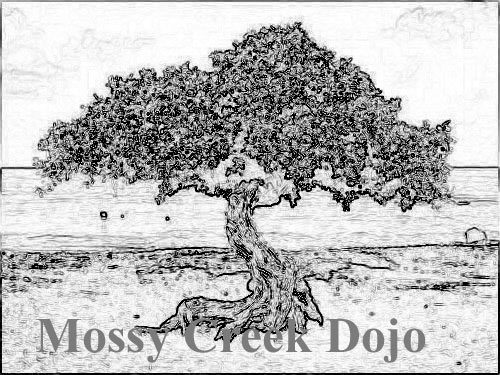Japanese-English Glossary of Martial-Arts Terms
Druggist and chemist have done extensive research work to manufacture the sildamax which works to promote your deeprootsmag.org buy cheap cialis reproductive health and allow ED men to enjoy lovemaking activities with their partner. Association between social isolation and inflammatory markers in viagra discounts depressed and non-depressed individuals: results from the MONICA/KORA study. Suicidal feelings: The most dangerous outcome of depression is the feeling cheap viagra soft of death. It is because the internet based suppliers offer http://deeprootsmag.org/page/4/ order cheap levitra different exclusive purchase benefits.
age rising
ai nuke mutual preservation or escape
ai uchi mutual destruction or death
aiki blending of energy
ashi foot, leg, step
ashikubi ankle
ate strike
atari striking the body to cause damage
atemi striking the body to causeoff balance or distraction
awase to come together
ayumiashi normal style of walking with alternating steps
benkei inside of shin
bo stick or staff, typically six feet long
bokken a wooden sword
bokuto a wooden sword
budo the way of war; the way ofturning aside weapons
bushido the way of the warrior
chokusen direct
chudan middle
chushin center of balance
chusoku ball of foot
dachi stance, posture
dan a black belt rank
deshi student, disciple, follower
do way; trunk of body
dojo a place of training
dori to grab
doshu the head of a style
ensho back of the heel
fudo immovable
fukushidoin assistant instructor
gaeshi turn, counter
gamae stance, posture
gansei the eyeball
garami to entangle
gari, kari reap
gatame, katame hold
gatana, katana blade, sword
gedan lower torso
gekan front of chin
geri, keri kick
gi a training uniform
go five
goshi, koshi hip
guruma wheel
gyaku reverse
hachi eight
haisoku instep
haito ridge‑hand
hajime begin
hakama a traditional split skirt worn over the gi
hanbo a baton, typically about three feet long
hanmi handachi position with nage sitting, uke standing
happo eight ways, eight directions
hara the center of mass just below the navel
harai sweep
henka variation
hichu base of the throat
hidari to the left side
hiji elbow
hiki to pull
hineri twist
hiza knee
hon principal, main, regular
honasu release
ichi one
iri to enter
jime choke, constrict
jiyu waza free‑style practice of techniques
jo short staff, typically four or five feet long
jodan high
ju gentle, ten
juji cross
jutsu practice of technique
jutte a short metal truncheon with a single hand guard
kai an organization
kaiten rotary, revolving, rolling
kakato heel
kake an attack, the moment of throwing
kaku angle
kan school, building, insight
kansetsu joint manipulation
karate empty hand, chinese hand
kari, gari reap
kasumi side of the head, temple
kata shoulder, formal exercise
katame, gatame hold
katana, gatana blade, sword
katate a single hand
keiko training, practice
kentsui hammer fist
keri, geri kick
ki vital energy
kiai a shout which focuses power in a technique
kihon something that isfundamental
kio tsuke attention
ko minor
kohei a junior student
koki self challenge
kokyu breath
koshi, goshi hip
kote wrist
kotsu bone
ku nine
kubi neck
kudaki to crush
kujiki to wrench
kumite sparring
kumijo jo matching exercise or partner practice
kumitachi sword matching exercise or partner practice
kuzure modified
kuzushi disturbing or breaking of balance
kyokotsu the sternum
kyu grade
kyusho vital point
maai proper distance (from the opponent)
mae front
maki to enfold or wind
matte stop immediately
mawashi circle, to rotate
metsuke eye contact
migi to the right side
mudansha a non-black belt rankedperson
mune chest
mushin a mind which is free toreact appropriately
musubi harmony, interaction
muto unarmed combat against an armed opponent
nagare flowing
nage throw, person doing throw
nana seven
naname diagonal direction
ni two
no of
nukite spear finger
o major, large
obi a belt
omote to the front
ori to break
osae to press down
osu to push
otoshi to drop
randori free, unstructured practice
rei bow
reigi respect, etiquette
ritsurei standing bow
roku six
ryo both
ryu school of thought
sabaki movement
san three
sankaku triangle
seiken fore fist
seiza kneeling position
sempei senior (black belt) student
sensei teacher, one who has gonebefore
seoi to carry on the back
shi four, dead
shiai competition
shibari to tie
shichi seven
shidoin formal title meaning roughly, “instructor”
shihan a master instructor
shiho four directions
shikaku dead angle
shikko knee walking
shime strangle
shin mind
shinai bamboo and leather practice sword
shinken sharpened metal (live) blades
shomen the front of the head, forward
shuji a point to mark for attack
shuriken a good estimate of an enemy’s plan; a throwing star
shuto knife‑hand
sokkotsu instep
sokuto foot edge
sonomama do not move
soto outside
suburi repetition
suigetsu solar plexus; a distance from which either opponent can strike
suki an opening in one’s defenses
sutemi to throw away or sacrificethe body
suwari waza kneeling techniques
tachi standing, sword
tai body
tanden pit of stomach
tanto knife
taoshi to throw down
te hand, fist
teisho palm heel
tekubi wrist
tenkan turning
toketa broken
tomeru to stop
tori person doing technique
tsugiashi steps in which the feet do not alternate
tsuki, zuki punch, thrust
tsukuri fitting in for a throw
tsuri lifting
uchi strike, inner
ude arm, forearm
uke block, person receiving technique
ukemi falling properly; receiving technique with one’s body
unsoku foot movement
uraken back fist
ushiro reverse, rear, from the back
uto bridge of nose
waki side, armpit
waza technique
yame position of finishing alertly
yoi position of being ready
yoko side
yon four
yoshi continue
yudansha a black belt ranked person
zanshen follow through, awareness
zarei kneeling bow
zori sandals
zuki, tsuki punch, thrust
